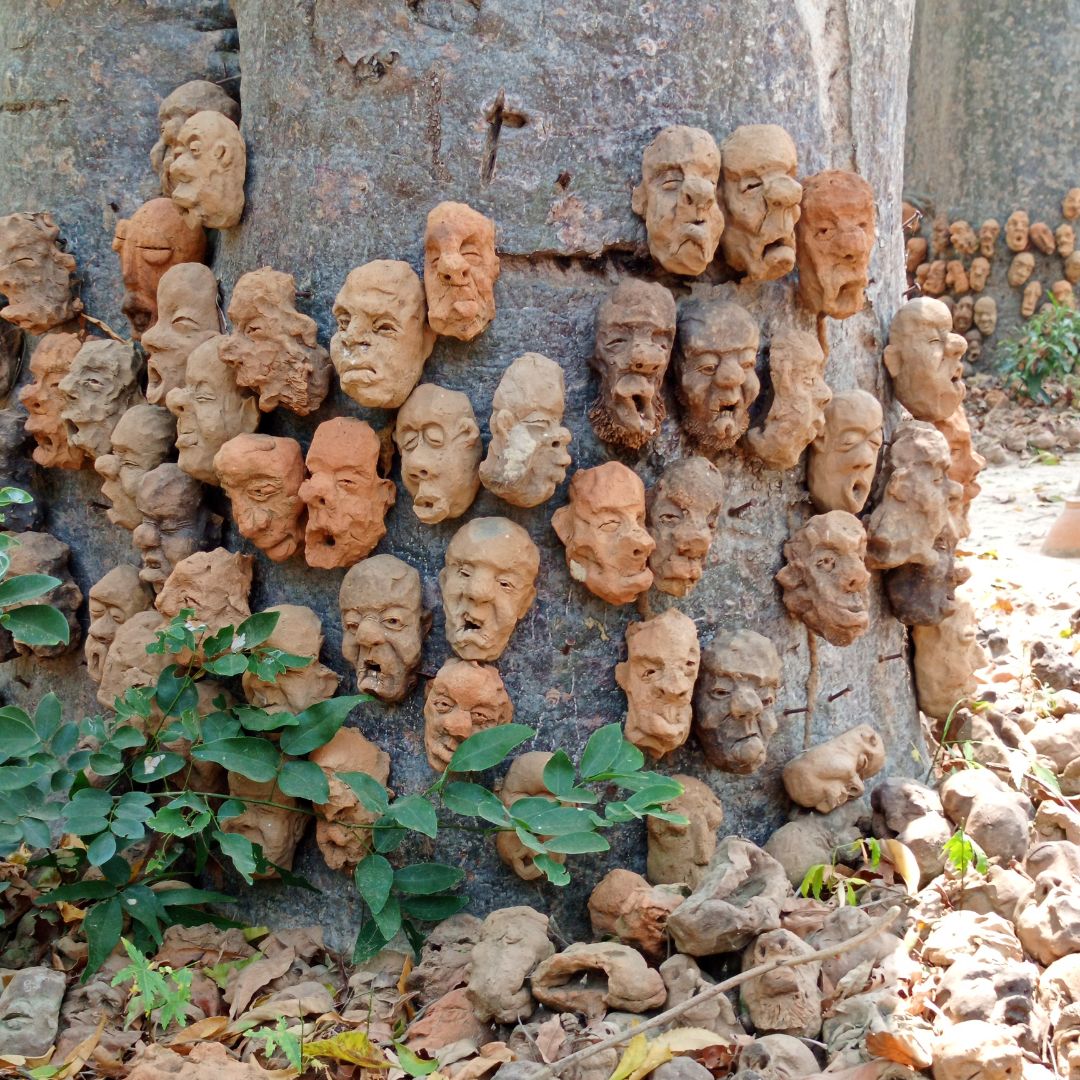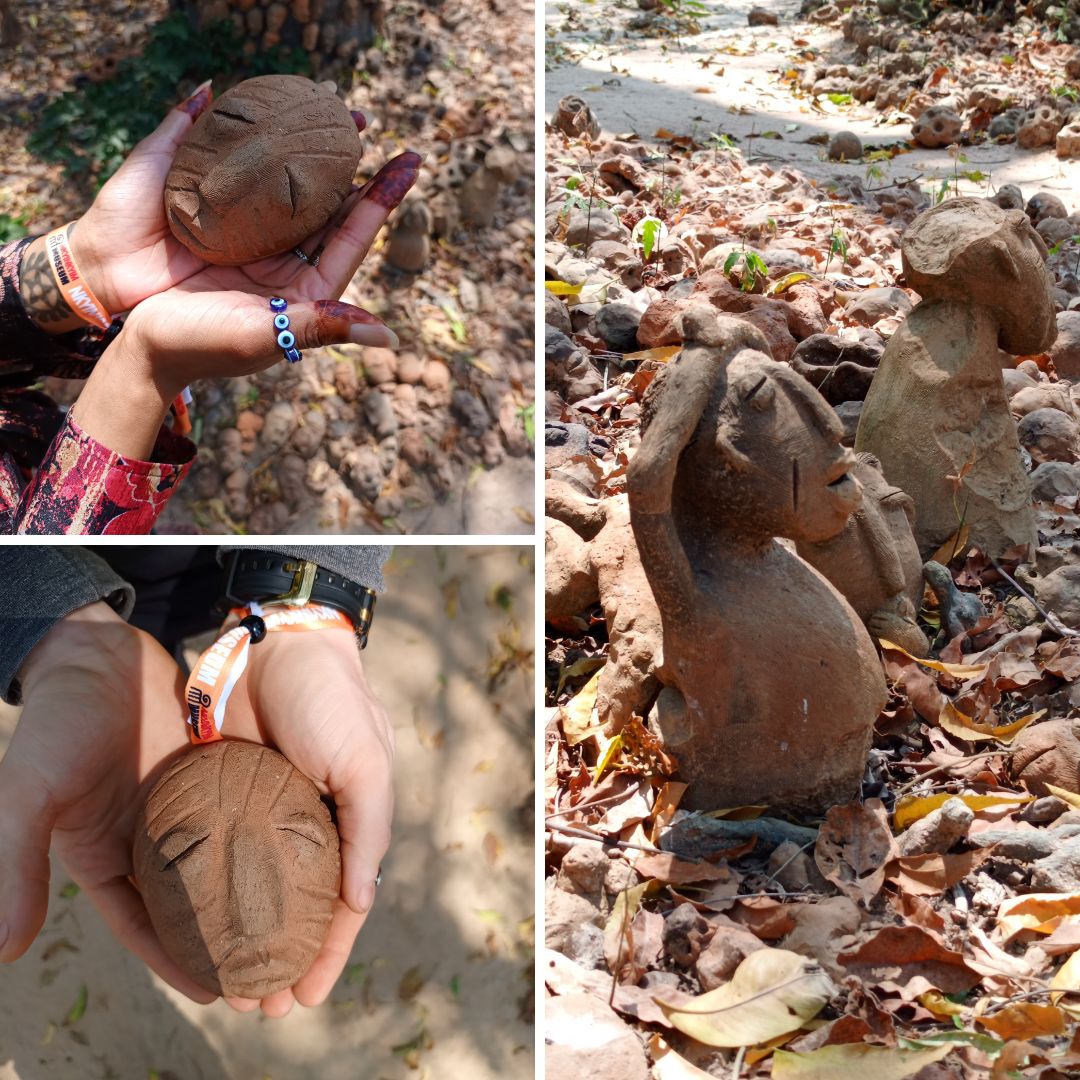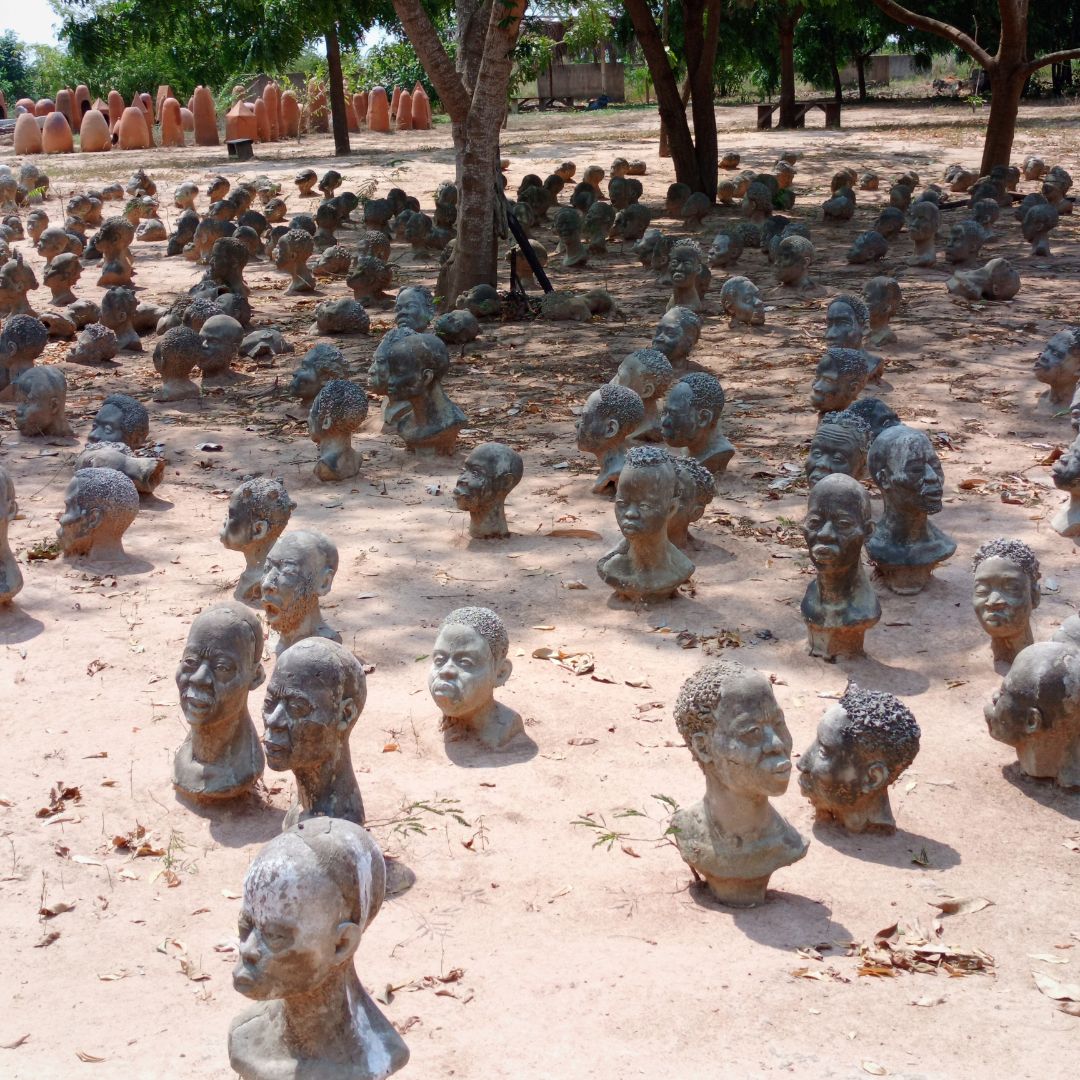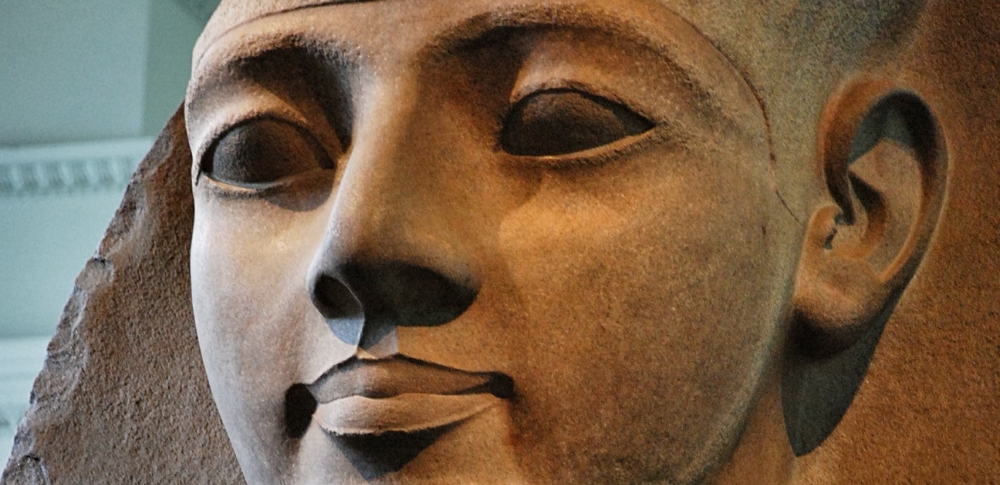This past week, we stood among thousands of faces at the Nkyinkyim Museum in Ghana, a cultural landmark in Ada where art, memory, and history converge to preserve the legacy of Africa’s past and its unbroken connection to the present.
At the heart of the Nkyinkyim museum lies The Ancestor Project, created by celebrated Ghanaian artist Kwame Akoto-Bamfo. The installation is a field of sculpted figures, each carrying the sorrow, strength, and silence of those captured and sold into slavery from West Africa. These life-sized clay and concrete statues are not abstract forms, but rather, they are portraits. Each one reflects the lives of real men, women, and children whose lives were torn apart. With every carved expression, visitors are reminded that slavery was not only history, it was real and human, and a reminder that every ancestor taken from home against their will had a face, a name, and a dream.

The Middle Passage Remembered
The Ancestor Project is a powerful memorial to the transatlantic slave trade and its devastating impact on West Africa. Between the 16th and 19th centuries, millions of Africans were captured, shackled, and forced onto ships that crossed the Atlantic Ocean in what came to be known as the Middle Passage.
For weeks or months, enslaved Africans endured unimaginable conditions—crammed below decks, chained, and stripped of their dignity. Disease, starvation, and abuse claimed countless lives before ships ever reached the Americas. Historians estimate that more than two million Africans perished during the journey, their bodies cast into the sea.
By visiting the Nkyinkyim Museum in Ghana and experiencing The Ancestor Project firsthand, history is transformed from numbers on a page into lived, visible testimony. Walking through the installation feels like stepping into a sea of silent voices, each figure speaking not in words but through presence, reminding us that they lived, they mattered, and they must never be forgotten.
Art as Archive and Resistance at Nkyinkyim
Kwame Akoto-Bamfo describes The Ancestor Project as more than sculpture; it is an archive of memory. Unlike history books that often sanitize or reduce the scale of enslavement, the work forces us to feel the weight of what was lost.
The ground itself at the Nkyinkyim Museum feels heavy with unspoken stories. These sculptures remind us that remembrance is not passive, it is resistance, and to forget is to allow erasure, but to remember is to breathe life back into our ancestors.
In this way, the museum serves as both a cultural landmark and a sacred space of mourning, reflection, and education. It confronts the uncomfortable truths about slavery while also affirming the resilience and humanity of those who endured it.
Why the Nkyinkyim Museum in Ghana Matters Today
In a world where the past is often rewritten, softened, or ignored, institutions like the Nkyinkyim Museum in Ghana ensure that future generations can stand face-to-face with history—not only through words, but through presence and spirit.
The museum is more than a collection of art; it is a living classroom, a reminder of how far-reaching the impact of slavery remains. The legacies of displacement, systemic inequality, and cultural erasure continue to shape societies across Africa and the diaspora. By keeping memory alive, the museum and The Ancestor Project offer not only healing but also a space for dialogue about justice, identity, and belonging.

A Call to Remember
For us at the African Narrative Network, our visit to the Nkyinkyim Museum in Ghana was a journey through history but also a call to action. The Ancestor Project reminds us that we are the living continuation of stories that were almost silenced. It teaches us that remembrance is a duty not just to honor the past but to shape a future where dignity, justice, and humanity prevail.
To walk among the ancestor project is to feel the eyes of our ancestors upon us, urging us never to forget. And in remembering, we resist the silence that history too often demands.
Follow The African Narrative Network.


